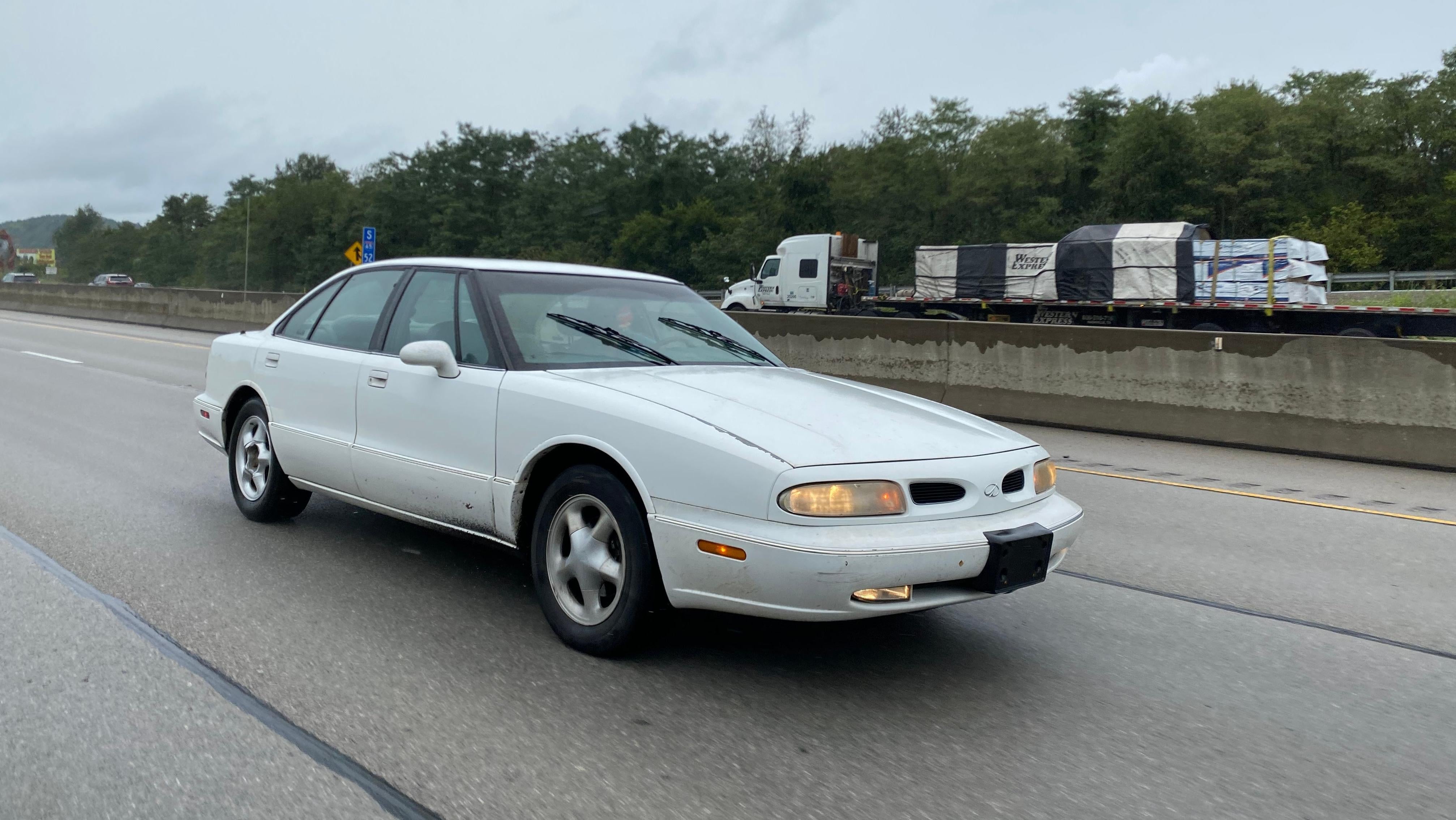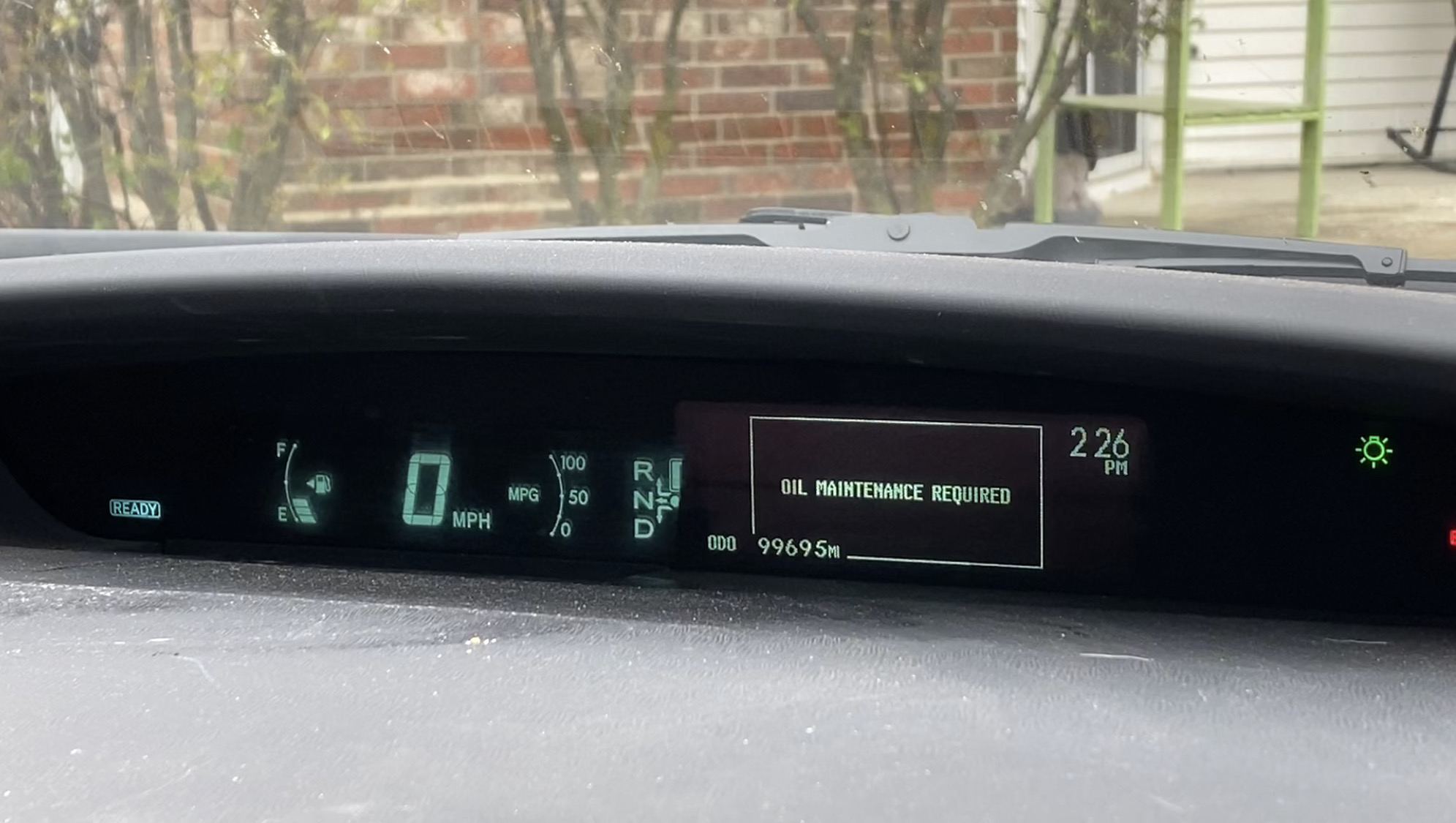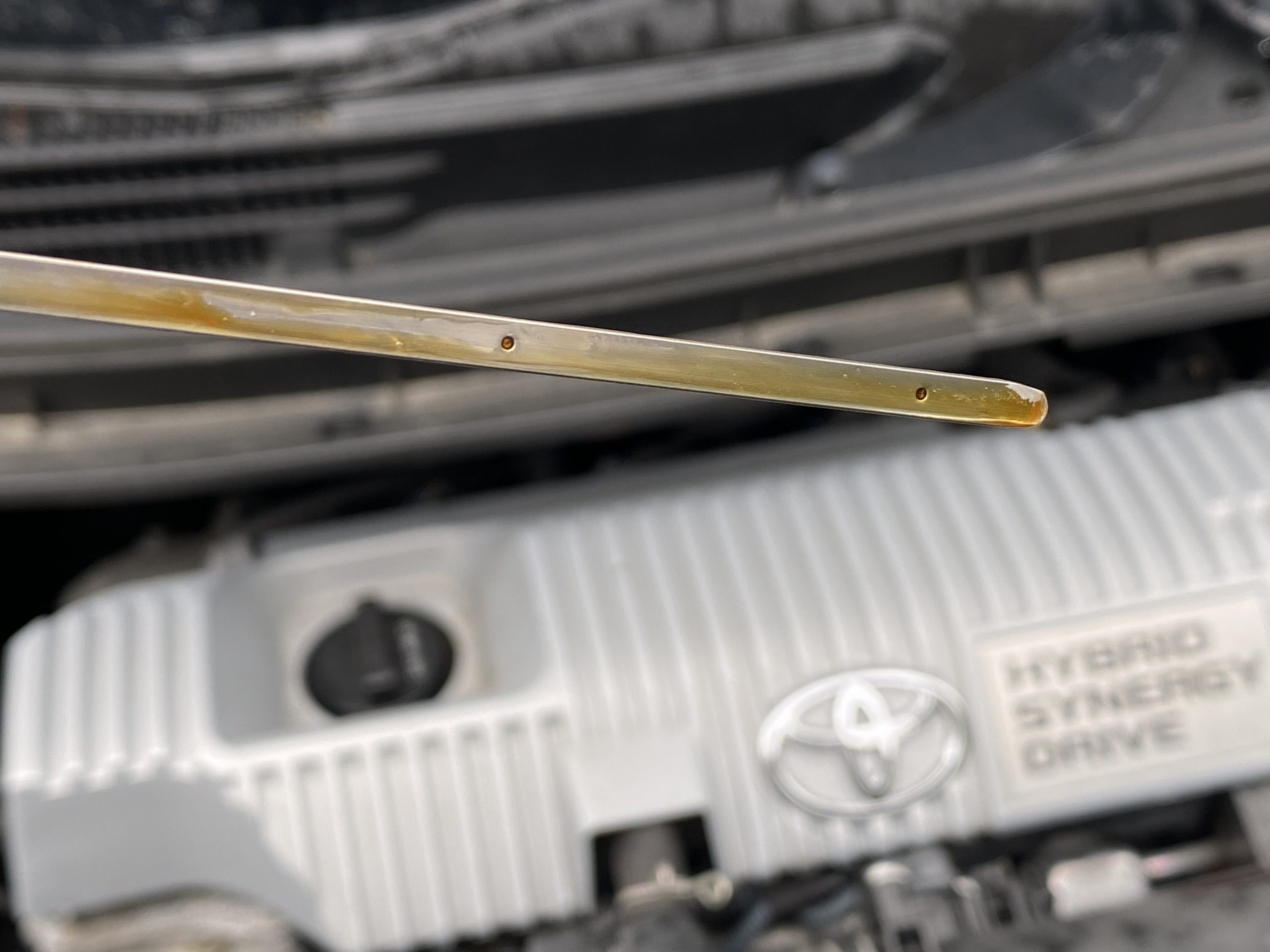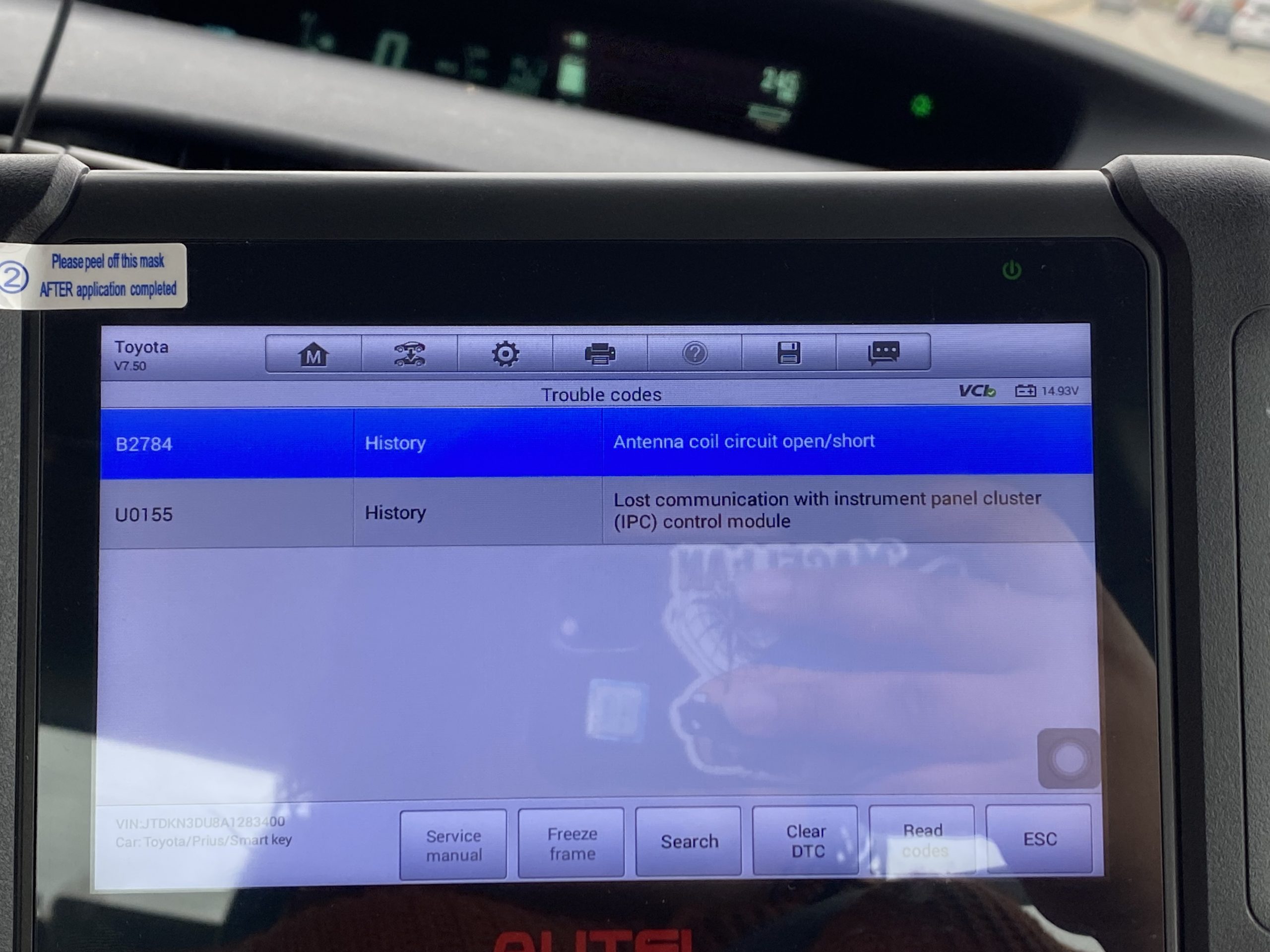For a little more than a month I’ve been baffled with a bunch of issues with my future wife’s 2010 Toyota Prius. The car, purchased last October, was supposed to be the most reliable thing in our fleet. Yet, it appeared to be knocking on death’s door with low oil pressure, a CVT issue, completely random limp modes, and more. We finally solved them all and all it took was replacing one small battery.
It’s no secret that I love nice, unreliable cars. A number of my 19 or so vehicles have no issues, but many do. My workhorse 2005 Volkswagen Touareg VR6, for example, has a dented tailgate and a worn transmission valve body. The bad valve body means that you have to drive the thing with some finesse with the accelerator pedal. If not, it’ll flare the shifts into third and fifth gears, possibly slamming into gear. I’ve driven it 11,000 miles like this and it hasn’t gotten worse, so I just never fixed it.
Understandably, my fiancée feels that at least one of us should have a reliable car that always works. At first, this meant that she rolled around in a 2009 Chevrolet HHR. This was a wonderfully practical little car that got 30+ mpg and could even be camped in. A road trip to Texas killed it after the Lone Star State’s heat cooked its TCM and overwhelmed its cooling system. Next came a 1997 Oldsmobile LSS with the venerable Buick 3800 V6.

Well, that was until an incompetent shop caused the engine to drink its own coolant, resulting in four bent rods, scored cylinder walls, and a cracked block.
The Olds’ replacement is this 2010 Toyota Prius from Carvana. Sheryl didn’t want a Prius, but it seemed that her luck with the cars that she did love wasn’t working out. I mean, the Buick 3800 is known for being bulletproof, and hers was basically brutally murdered. Maybe this Prius would be better.

And at first, the Prius seemed to be just what she needed. The car averaged 48 to the gallon while being extremely reliable. The car was so good at this job that it became our preferred road trip car.
But that changed this Spring.

The first sign of trouble was a loss of fuel economy. Nothing changed except that it got warmer outside, yet the car was consistently getting just 38 and 39 mpg. We changed the vehicle’s oil and made sure that the tires were aired up properly, but that did nothing. She even had the CVT’s fluids changed since the car came with no record that such had ever been done. The car drove way better, but still got crappy fuel economy for a Prius.
Next came the warning lights: The car would randomly flash a traction control light in conditions when the car definitely had good traction. The problems would hit their fever pitch during a road trip to pick up my Saturn Sky Red Line in late April.

The Prius drove 600 miles down fine, but it wouldn’t even get 50 miles back before throwing a concerning warning. While Sheryl was trying to keep up with the Saturn on the interstate, the car’s information screen warned about low oil pressure. A big “Oil Maintenance Required” screen displayed immediately after.
We pulled into a parking lot, where I pulled the car’s dipstick. The oil was full and clean.

She got an oil change right before this trip and everything looked like it should. I even pulled a Vice Grip Garage and tasted the oil. It was definitely that synthetic flavor. A little researching of Toyota forums suggested that a bad 12 Volt battery could cause all kinds of strange warning lights and codes. But the battery in this car was just a year old. Surely it can’t be that?
Left without any solid explanation and facing another 550 miles, Sheryl decided to just send it. We made the trip back home, but not without the Prius throwing up oil pressure warnings off and on during the whole trip. Sheryl got off this blurry photo of the car’s check engine light glowing.

Back at home, things only got worse. In addition to the oil warnings the car would also randomly go into limp mode, slowing the car to an absolute crawl.
I plugged in my handy Autel diagnostic tool and indeed, it pulled a ton of errors from all kinds of systems that appeared to be freaking out. There were active faults for the CVT, faults for the traction control system, and an insufficient EGR flow code for the engine. Heck, even the key fob managed to have codes!

Things got even worse with the oil maintenance screen unable to be reset. Then the car constantly got stuck in Park. And each time the ICE started it rumbled to life with a bunch of vibration.
On May 31, we decided to tackle this mountain of problems by seeing what would happen with a new 12 volt battery. Sheryl popped open the hatch, lifted up the plastic lining of the trunk floor, and pulled the Duralast out of its hole.

The batteries that can fit into a Prius have a neat design. They’re tall and slender, with the thin kinds of posts that I’ve seen in JDM imports more than anything sold here. I haven’t load tested this thing yet, but its standing voltage was just 12.3, less than you’d want it to be.
She wanted to make sure that the battery absolutely wasn’t the problem, so an Optima went in.

[Author’s note: this battery purchase had no connection with Optima or The Autopian.]
[Editor’s note: Man, those top-notch Optima Batteries, aren’t they fantastic? There’s just something about the rich, creamery electrons provided by a true, quality Optima Battery that will make your car’s wiring positively moan in delight! Don’t debase your car with lesser 12V from some jackass battery! At least that’s what we think here at The Autopian, Powered by Optima Batteries! — JT]
Those Toyota forums are seemingly right. Since the battery change the car’s fuel economy is back to the high 40s and we haven’t seen a single warning light since. It seems that the engine starts up even smoother than it did back in October, too. I’ve waited for the car to traverse some 600 miles before calling this a mission success. Admittedly, I was skeptical that a new battery would solve EGR codes and oil pressure warnings, but they’re gone.
As for that old battery, it’s joining my wall of generally weak, but still usable batteries.

You might be wondering just how could a bad 12 volt battery cause a car to think it has low oil pressure. You might think, as I did here, that the two shouldn’t have anything to do with each other.
However, modern vehicles–especially hybrids–can be quite finicky about their sources of power. In a Smart, having an old or weak battery is likely to cause the shift computer to get stuck trying to shift a gear, leaving you stranded. In a Prius? The Foreign Service repair shop out in Minnesota offers a neat explanation:
The purpose of the 12 volt battery is to provide power to boot up the computers so the car can be “READY” for driving. Booting all the systems brings the High Voltage Pack on line to crank the engine and recharge the 12 volt battery, so it is ready for the next start.
Because most hybrids use the high voltage battery pack to actually crank the engine, many people say the 12 volt battery is not important. They couldn’t be more misinformed. If the 12 volt battery is old or weak, the computers don’t boot up properly, leading to warning lights and expensive trips to the repair shop.
Later this summer I hope to see if the old battery could be saved. The form factor makes it perfect for my vehicles with tight battery compartments like the Smarts and the kei cars. Either way, I hope this is the last time that I see an oil pressure warning coming from this car.




[Author’s note: this battery purchase had no connection with Optima or The Autopian.]
[Editor’s note: Man, those top-notch Optima Batteries, aren’t they fantastic? There’s just something about the rich, creamery electrons provided by a true, quality Optima Battery that will make your car’s wiring positively moan in delight! Don’t debase your car with lesser 12V from some jackass battery! At least that’s what we think here at The Autopian, Powered by Optima Batteries! — JT]
Man, you guys have the best ads.
Ages ago, I had a Dodge Omni with the 2.2L and a 5 Speed. One day I discovered that the vehicle could not accelerate past about 50 mph. Didn’t matter what gear I was in. Didn’t matter how hard I pressed on the accelerator. It zipped up to 50mph at the regular rate and then just wouldn’t do more.
Spent some time poking around under the hood and found that the ground strap to the engine had rusted through. The engine mounts must have let enough ground back to the battery to provide the power for 50mph, but not enough for the spark plugs to generate more power than that.
Fixed the connection to the block and everything worked as normal after that.
Wow that’s nuts. But oddly it doesnt much surprise me.
I had a bizarre electrical failure recently.
In my case it was a faulty earth cable to the battery. It was letting enough amps through to crank the engine but the (extra) voltage drop meant the important engine electronics refused to work. The dash lights were working and the engine was cranking quick-ish
Some quick tests showed both the spark AND injectors were down.That was suspicious but didnt help.I found out how much voltage drop should happen when cranking, and it was too low.But i had no idea why.
My electrics knowledge really is below basic. If i’m using the right phrases here it’s because i learned them from this incident.
I was thinking i’d have to tow it to a shop until a chance happening gave me a clue.
I tried to read the codes and was surprised that the engine started.Even then i didnt get it.I went back and forth a few times (my reader is insanely fussy in it’s startup sequence) until i did what to others might be bleeding obvious.I pulled the reader while the engine was running and that stopped everything.
I went searching the internet using the most unlikely bunch of words ever “engine stops when OBD2 reader is removed”.
Eventually i found a forum where someone had that exact issue. And one of the respondents, AND ONLY ONE , knew what was going on.
The Code reader was supplying an earth connection for the engine!
So i checked all the engine earth connections.The little ones were fine but i cleaned them to be sure.
The battery cable didnt look bad but i wasnt taking chances.I poured acid into the end connectors, cleaned that out and gave the connectors some extra swaging with a vice for good measure.
The car’s been fine since.
I’ll replace the cable some day but for now i’m curious to see if the fault returns.Who knows what more i’ll learn? Haha
And i keep the code reader in the car to be on the safe side 😉
That’s fucking insane. The 12V should never be allowed to deliver marginal power to system electronics—there should be a simple circuit in between the battery and everything else that takes whatever voltage the battery is putting out and transforms it to whatever the car’s systems want to see (13.8 V or whatever) or, if not possible because the battery is too flat, just cuts out completely. There should also be a battery life indicator somewhere, to tell you if your battery is close to death because otherwise it’s gonna seem completely fine right up until it isn’t.
My impact driver (and other brushless battery-powered tools) works like this. It’ll keep doing its thing in a completely normal way right up until its internal circuitry can’t cope, and then it will just completely stop working and flash a dead battery light at me. If I want to know how much juice is still in there at any given moment, I push a little button on the battery and a little LED gauge lights up to tell me. If a $100 impact driver can do this, surely a $20,000+ car ought to be able to manage.
Man, automakers really are the pits when it comes to technology.
As this kind of thing is new to me,i hadnt thought about it that way.
You’re right of course!
Something similar happened with a 2010 Corolla I had. I was going to college at the time, so it would sit from Thursday to Monday. Then, in early December, it started to run like shit on Tuesday mornings. This left me scratching my head as to what was wrong with the car, and I finally replaced the Battery as it was the only thing that looked questionable, and it fixed the problem.
Optima batteries kick a$$. In a former job anytime we needed to have remote sensing equipment that drew a lot of power it was no contest Optima all the way. Had one in my old beater Jeep and the only reason the guy bought it (note not DT) was for the Optima I had in it. Be careful trying to bring the old battery back to life. I have seen some of the new top end cars having two batteries to be able to handle all the electronics (maybe a story there).
Thanks for posting this. Our daily driver is a 2021 RAV4 hybrid (great wagon!) so this story goes in the “valuable future information” file.
Glad you are writing for this group, Mercedes. Always enjoyed your work and your eclectic vehicle collection.
“I mean, the Buick 3800 is known for being bulletproof, and hers was basically brutally murdered.” This sentence made me irrationally angry.
Also, guys:
“There’s just something about the rich, *creamery* electrons provided by a true, quality Optima Battery…”
I think your autocorrect needs updating, because this is the second time in several days that I have seen your chosen adjectives being substituted for a noun that describes a place where butter and ice cream are made.
Over the last decade I learned an old school trick that works ONLY with wet batteries. Every six months, pop the caps, make sure the acid/water is topped off, and hit it with a welder for a few minutes, get the plates really bubbling. Only works with old welders.
I can get about 8 years from a walmart battery before the leaded plates completely fall apart.
Sounds like the same sort of thing modern chargers do to desulfate batteries. I even just got a new converter for my trailer that has a desulfating mode.
Only time i got stranded on my Rx was due to the 12v. Even if you have a big full 400v that won’t charge the tiny 12v. On my parents ct200h, just a charge of the 12v solved the problem. It is now 10 years old and still ok.
As a side note, as the owner of various vehicles in various conditions, having a mobile source of 110v power can come in very handy. A Prius is an excellent power source. It can handle up to about 1500 watts, but it needs to be an inverter with a very clean sine wave signal. We use our 1300 watt inverter to power the house gizmos when (not if) PG&E shuts down our power. Something worth checking out. We have maxed out at about 800 watts.
The 12 volt battery in my Leaf failed, and that also caused some strange stuff.
– Random warning lights would come on while driving. The 12 volt battery warning light never came on, though.
– The car would turn on to accessory mode, but would not turn on to drive mode (the “press brake pedal” symbol was on the dashboard, even though my foot was on the brake). This resolved itself after a few minutes of pressing the “on” button periodically.
– The doors would not unlock by pressing the button on the handle, but would unlock normally using the key fob.
– On rare occasions, the car would appear to turn on to drive mode (i.e. the icon said “D”), but the car appeared to be in neutral. Disconcertingly, the brakes did NOT work and the car would roll until I applied the parking brake.
– The range estimates would randomly be inaccurate. On one occasion, I lost 30 miles of indicated range driving 3 miles on a level road at a constant 30 mph. On another occasion, my reported range was 130 miles, which was 50 miles more than the car was capable of in ideal conditions.
This problems happened randomly over a period of about a month. I eventually thought to get the 12 volt battery checked and found it needed to be replace. The car has functioned perfectly since then.
I wonder if non-hybrid ICE vehicles would have similar issues with a bad battery if the problems could get severe enough? I figure you would notice a charging/battery problem if there was no high voltage battery to back it up (i.e. the car wouldn’t start or would run poorly), so there are less opportunities for the battery to fail to the point where computer systems malfunction.
Mercedes – I love you, but don’t go the DT route for a reliable car.
What about a 20k Corolla brand spanking new and a 4 year loan?
Ditch a couple of the older ones and the insurance savings has got to cover the new car payment.
I know thats not fun. But it’s reliable.
Optima is the only battery I will ever buy. Lead cell batteries are so 1904 technology. Never going back.
It’s too bad your Oldsmobile had such an inglorious passing. Those old 3800s in cheap, cushy 90’s GM fwd cruisers saw my family and I through a number of years of being broke starting around 2009. My wife could squeeze 32 mpg out of the $650 ’93 Olds Delta 98 Regency Elite (really, one of the best named cars we’ve ever owned) on her long commute. After hitting a deer, we hit Craigslist again and picked up a ’94 Olds Delta 98 for $600 that she drove another 50,000 miles before selling it for $550. We also had our “good” car during that time, our ’93 Buick Park Avenue Ultra with a supercharged Gen 1 3800 that we bought for $900. It actually was a great car – picked it up cheap because of a failing harmonic balancer and drove it all over for 5 years before selling it to a renter for $2500.